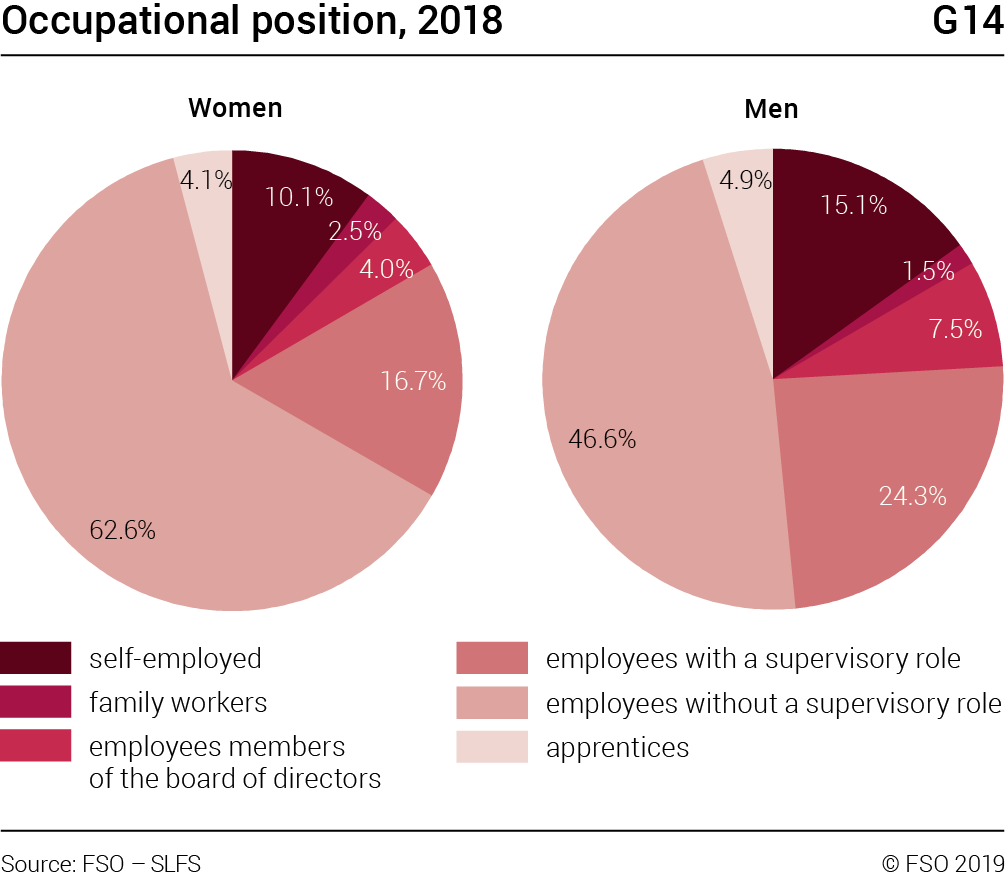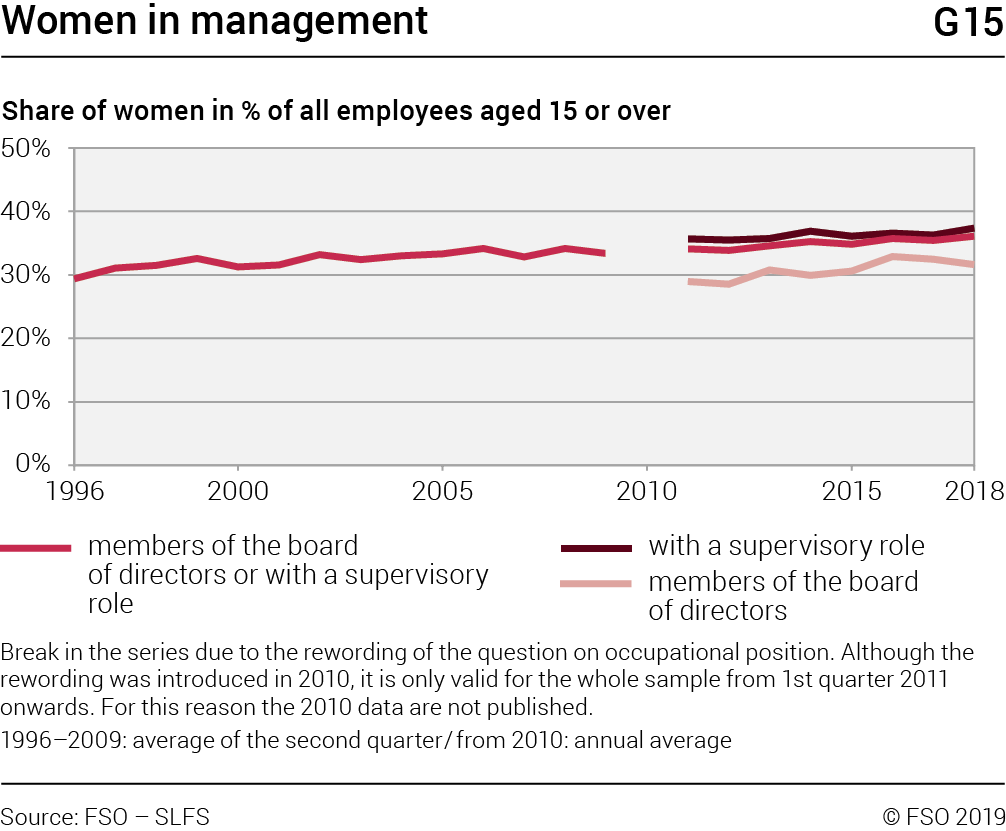The knowledge and skills acquired from education can be put to use in paid employment. Although women have made considerable progress in education, their employment history still differs in various ways from that of men. The differences between women and men with respect to paid employment need to be considered also in the context of the distribution of paid and unpaid work between the sexes.
2.1 Labour market participation
The economic activity rate of women and men aged 15 to 64 are increasingly narrowing. Since the end of the 1990s, that of women increased, while that of men registered a slight decline until 2004 and then levelled off.
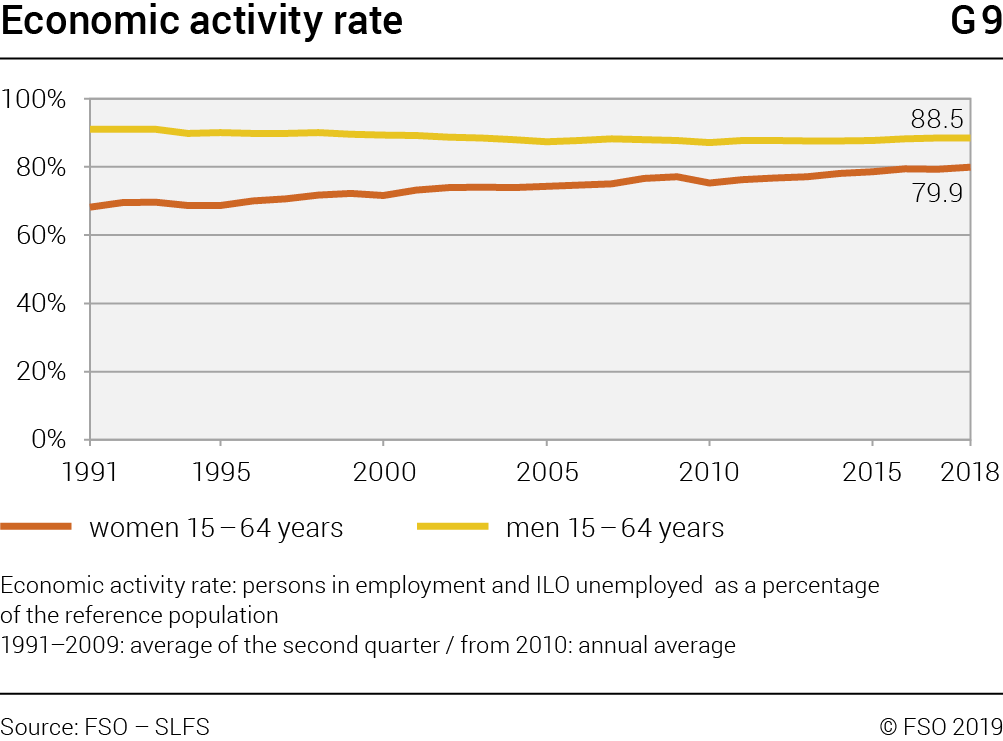
The unemployment rate based on the ILO definition among women is higher than that among men. The rates for both genders grew much closer between 2011 and 2016 compared with the years before. But over the past two years the gap has widened once again.
In accordance with the increase in activity rates, the share of economically inactive persons among women fell from 32% in 1991 to 20% in 2018. The composition of this group has changed markedly. Although housewives still account for the largest group of economically inactive persons, only half as many, compared to the early 1990s, consider themselves as such. During the same period, the share of economically inactive persons among men increased from 9% to 12% and mainly consisted of persons in education and training.
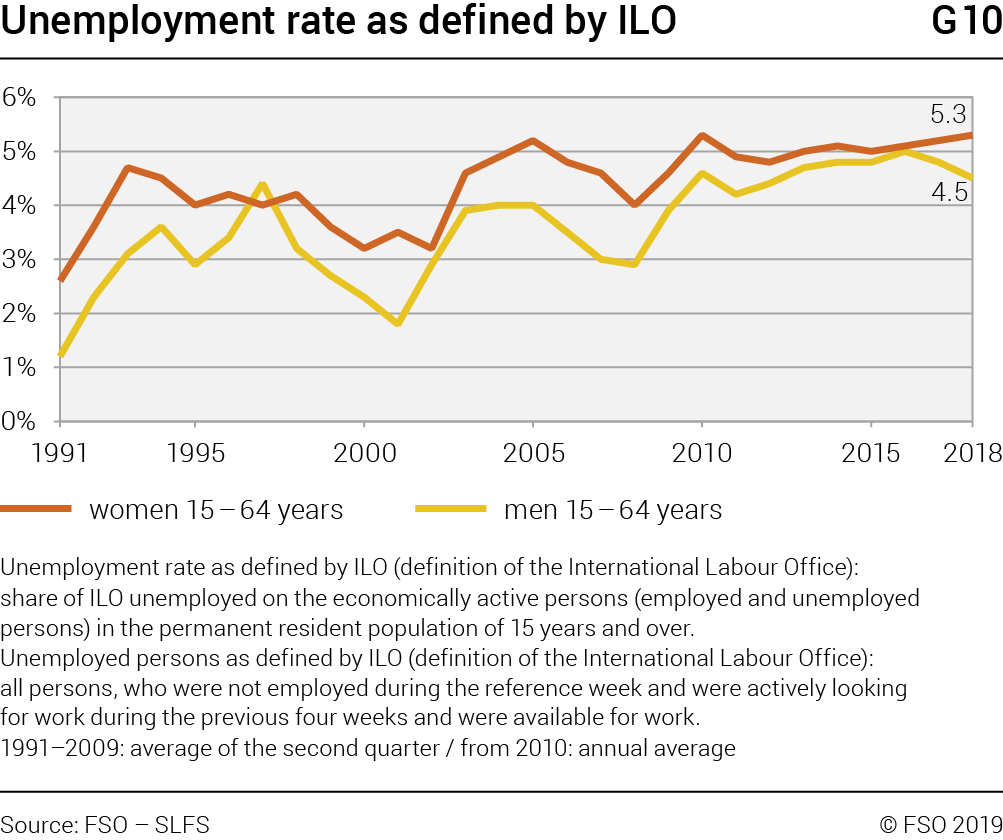

2.2 Part-time employment
59% of women in employment have a part-time job, compared with 18% of men. Consequently, part-time work is a typical characteristic of women’s working life. In some circumstances, a part-time job can entail precarious working conditions, insufficient social security coverage (e.g. pension fund) and fewer opportunities for further education and training and for career advancement. On the other hand, part-time work does provide the opportunity to pursue other activities, such as training, caring for children, helping other people and doing housework. Since 1991, part-time work has increased among women and men in employment. There has only been a slight decrease for work-time percentages of less than 50% among women.
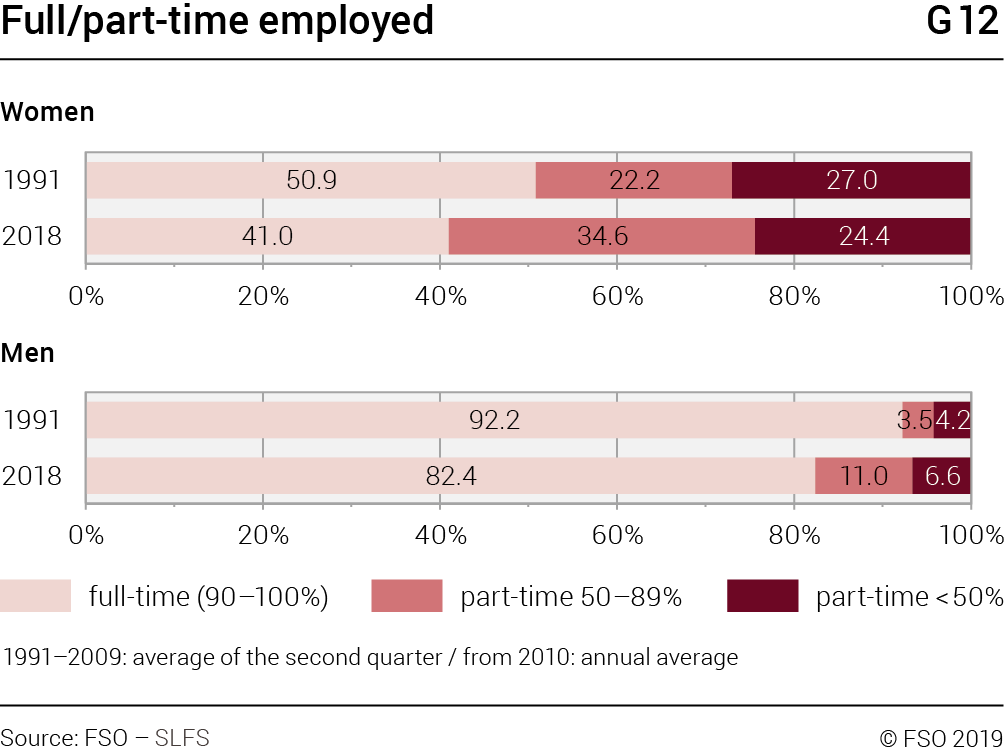
2.3 Underemployment
A majority of the underemployed persons, i.e. employed persons working part-time who would like to work more and would be able to do so within a short lapse of time, are women.
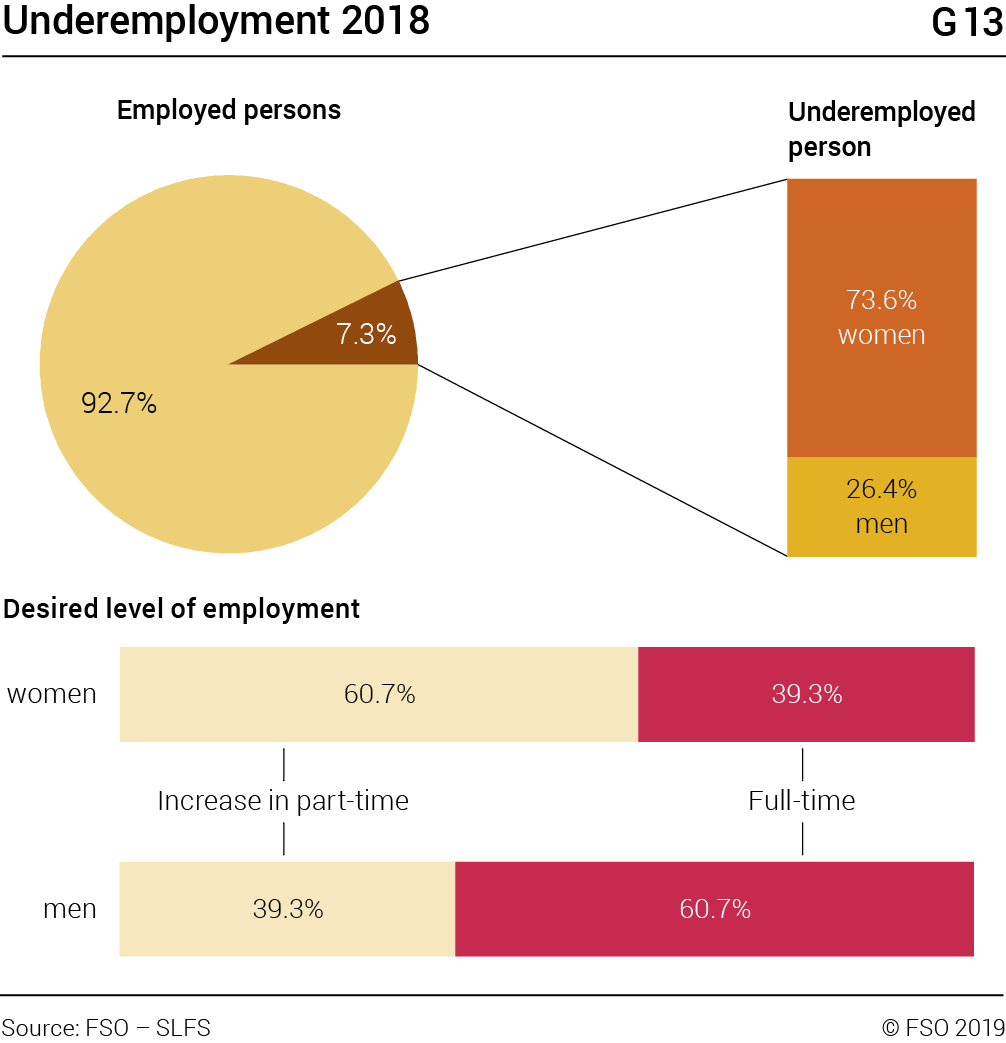
Since 2004, there has been a downward trend in the number of women who are underemployed. The demand for full-time employment has seen a clear increase among both women and men. In 2004, 30% of underemployed women would have liked a full-time position compared with 39% in 2018. Among men, the corresponding percentages were 47% and 61%.
2.4 Occupational position
Women are more often employed in a position without a supervisory role whereas men are more often members of the board of directors or have a supervisory role. Women are also less often self-employed than men. Since 2011 no noticeable changes have occurred regarding the distribution of professional positions.
The proportion of women in management has risen slightly since 1996 and for a few years now has constituted just over a third.
